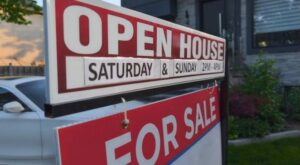The Changing Landscape of Real Estate: Navigating Price Strategy in a Shifting Market
Frustration is palpable among homeowners across the U.S. as they find themselves compelled to slash asking prices by tens of thousands of dollars in a rapidly shifting real estate environment. After years of soaring home values, today’s market paints a very different picture: buyers are increasingly cautious, mortgage rates are high, and housing inventory is swelling.
In a recent report by Redfin, the median U.S. home seller is seeking prices about 9% higher than what buyers are prepared to offer, creating a staggering average gap of $39,000. For many sellers, this gap is not just a statistical anomaly—it jeopardizes their plans for moving to a dream home or funding critical financial goals.
The Price Dilemma: High vs. Low
As sellers grapple with these changes, a pivotal question arises: should they price their homes high, hoping to wait out the market, or opt for a lower price to facilitate a quicker sale? The data suggests that waiting could carry significant risks, and understanding the implications of each strategy is crucial for today’s sellers.
The Cost of Waiting
Opting to hold out for a higher price can backfire in today’s competitive climate. Homes that linger on the market tend to accumulate significant carrying costs, which include mortgage payments, property taxes, maintenance, and insurance. For example, consider a home valued at $500,000 with monthly costs estimated at $3,000. If the property remains unsold for just three additional months, the seller incurs an out-of-pocket expense of $9,000. This figure does not even factor in potential price reductions or concessions to buyers that can further eat into profits.
Moreover, the risk associated with market dynamics cannot be ignored. As inventory grows—active listings were up 30% year-over-year in April according to Realtor.com—sellers face the threat of being overshadowed by newer listings that are better-priced.
Opportunity Cost: The Hidden Dilemma
In a practical example, Spencer Bauman from Utah illustrates the risk of underestimating the market. After 72 days without offers, he was forced to reduce his asking price by $75,000, delaying his next purchase and financial aspirations. As such, the opportunity cost of waiting can have profound implications, hindering homeownership progression and financial flexibility.
The Value of Strategic Pricing
The path to a successful sale lies in setting the right price from the start. A well-researched pricing strategy not only facilitates a faster sale but also alleviates stress and maximizes seller profits. Research from Extreme Investor Network reveals that most buyer activity occurs within the first two to three weeks of a listing. If a property is priced too high during this period, it risks becoming a “stale listing,” leading to assumptions that something is wrong or buyers leveraging the time on the market to negotiate steep discounts.
Conversely, a strategically priced home garners more interested buyers, resulting in quicker offers and fewer concessions.
Tips for Effective Pricing
-
Seek Realistic Valuation: Get a professional appraisal or analysis based on comparable sales in your area. Avoid wishful thinking; data-driven pricing is key.
-
Consider Psychological Price Points: Pricing a home at $489,000 rather than $500,000 can yield significant psychological advantages and buyer interest—even if the difference is marginal.
-
Set a Timeline for Evaluation: If serious interest hasn’t materialized within 21 days, it may be time to reconsider your strategy—whether that means adjusting the price or improving the property’s appeal.
- Stay Nimble: In this shifting market, sellers who adapt to buyer sentiment and stay informed on trends are likely to close deals successfully.
The Bottom Line
Extreme Investor Network emphasizes that the art of real estate selling in today’s market hinges on adaptability, strategic pricing, and a keen understanding of buyer behavior. By proactively managing expectations and pricing smartly, homeowners can navigate the current landscape with confidence.
In sum, the trends suggest that a well-informed pricing strategy is not just beneficial but necessary. Homeowners must not just react to changes, but anticipate them to secure a successful sale and move into the next chapter of their financial journey.

